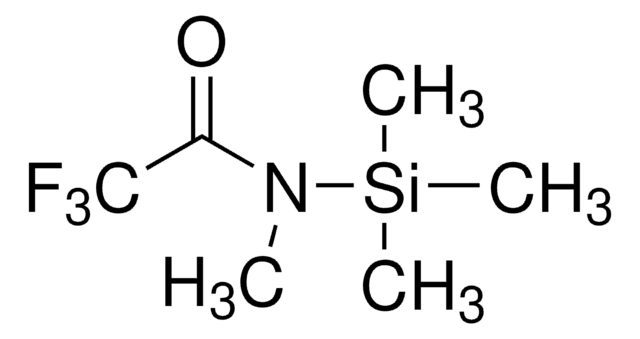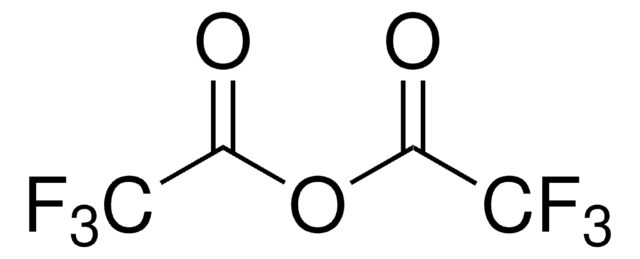375934
N-tert-Butyldimethylsilyl-N-methyltrifluoroacetamide
≥95%, with 1% tert-Butyldimethylchlorosilane
Synonyme(s) :
MTBSTFA + TBDMSCl, 99:1, N-méthyl-N-tert-butyldiméthylsilyltrifluoroacétamide, MTBSTFA + 1 % TBDMSCl, Mélange de silylation VI
About This Item
Produits recommandés
Nom du produit
N-tert-butyldiméthylsilyl-N-méthyltrifluoroacétamide avec 1 % de tert-butyldiméthylchlorosilane, ≥95%
Niveau de qualité
Essai
≥95%
Forme
liquid
Contient
1% TBDMSCl
Groupe fonctionnel
amine
fluoro
Température de stockage
−20°C
Chaîne SMILES
CN(C(=O)C(F)(F)F)[Si](C)(C)C(C)(C)C
InChI
1S/C9H18F3NOSi/c1-8(2,3)15(5,6)13(4)7(14)9(10,11)12/h1-6H3
Clé InChI
QRKUHYFDBWGLHJ-UHFFFAOYSA-N
Vous recherchez des produits similaires ? Visite Guide de comparaison des produits
Catégories apparentées
Application
Produit(s) apparenté(s)
Mention d'avertissement
Warning
Mentions de danger
Conseils de prudence
Classification des risques
Eye Irrit. 2 - Flam. Liq. 3 - Skin Irrit. 2
Code de la classe de stockage
3 - Flammable liquids
Classe de danger pour l'eau (WGK)
WGK 3
Point d'éclair (°F)
113.0 °F - closed cup
Point d'éclair (°C)
45 °C - closed cup
Équipement de protection individuelle
Eyeshields, Faceshields, Gloves, type ABEK (EN14387) respirator filter
Faites votre choix parmi les versions les plus récentes :
Déjà en possession de ce produit ?
Retrouvez la documentation relative aux produits que vous avez récemment achetés dans la Bibliothèque de documents.
Les clients ont également consulté
Articles
Results of a study involving the ability few Fluka silylating reagents to form GC-MS-compatible trimethylsilylmethyl derivatives of NSAIDs
Notre équipe de scientifiques dispose d'une expérience dans tous les secteurs de la recherche, notamment en sciences de la vie, science des matériaux, synthèse chimique, chromatographie, analyse et dans de nombreux autres domaines..
Contacter notre Service technique







